A $4.50 bowl of Singapore pork noodles is now the cheapest Michelin-starred meal in the world. I eat noodles every day, and it was still one of the best meals I've ever had.
Marielle Descalsota

- Last weekend, I tried the world's cheapest Michelin-starred meal: Singapore pork noodles.
- Locally known as bak chor mee, it cost 6 Singapore dollars, or about $4.50.
Many Singapore residents, including myself, spend a lot of time eating at hawker centers, the open-air food stalls found throughout the city-state.
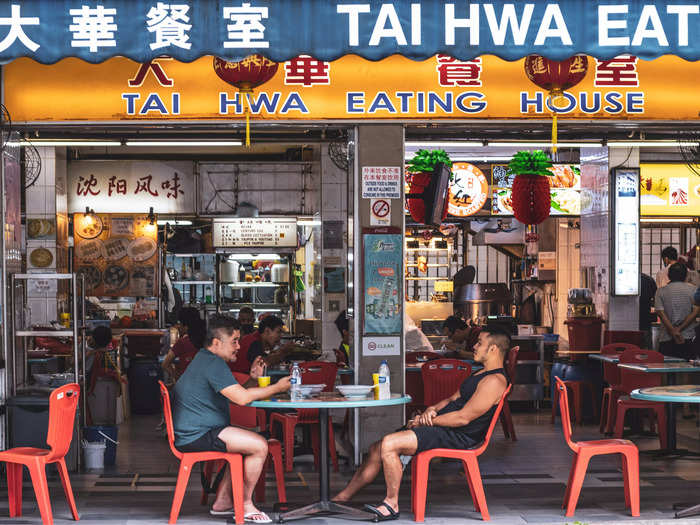
Ever since moving to Singapore nearly 20 years ago, I have been eating noodles almost every single day.
While I fancy the occasional fine dining experience, hawker centers remain my go-to choice for meals. They are inexpensive, delicious, and convenient, with vendors usually serving up meals within five minutes.
There are over 110 hawker centers in Singapore, and they are considered an "integral part of Singapore living," according to local government microsite Our SG Heritage.
One such hawker stall is Hill Street Tai Hwa Pork Noodle, a street-food vendor that sells a Michelin-starred dish for 6 Singapore dollars ($4.50).
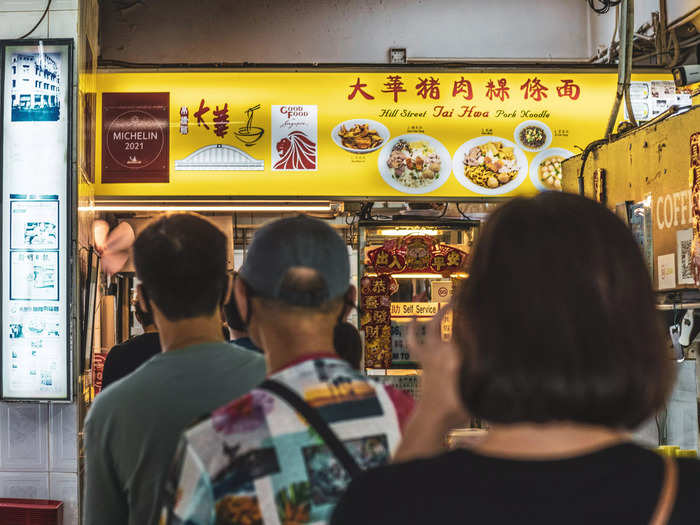
My favorite noodle dish is a popular minced pork-meat noodle dish called bak chor mee. The dish is often served at Chinese Teochew hawker stalls.
Bak chor mee is usually inexpensive — I typically pay about S$3 to S$4 for a bowl of it — so I was curious if the taste would be worth the premium at Tai Hwa.
Hill Street Tai Hwa Pork Noodle is no ordinary hawker stall: It's currently one of two street food vendors in the world with a Michelin star.
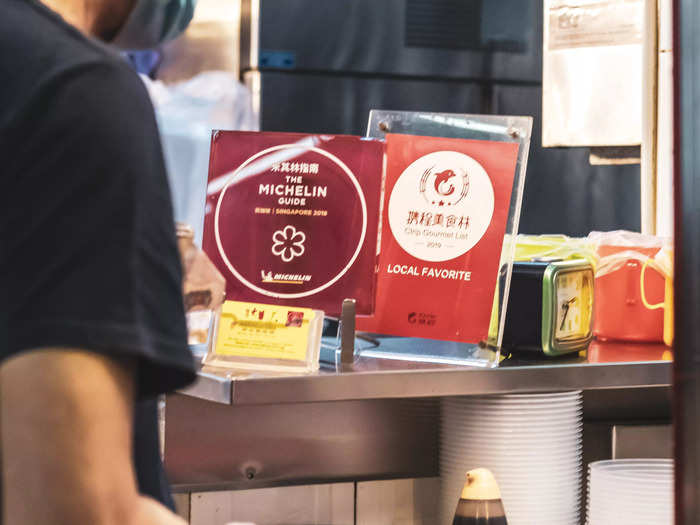
Jay Fai in Thailand is the other street food stall that currently has a Michelin star. Its dishes cost between 300 and 1,500 Thai baht ($9 to $45) — considerably more expensive than Tai Hwa Pork Noodle.
Tai Hwa has consistently retained its one Michelin-star rating since 2016 (with the exception of 2020, when the Singapore guide was cancelled).
And there's more. Singapore-based Hawker Chan previously held the title of the world's cheapest Michelin-star dish. Its famed soya chicken with rice — simply known as chicken rice — costs S$3 ($2.25). But Hawker Chan did not make it onto the 2021 Michelin food guide, which means Tai Hwa now holds the title of the world's cheapest Michelin-starred meal.
On a Sunday afternoon, I headed to Tai Hwa Eating House at Crawford Lane to taste my first Michelin-starred noodles and find out if the dish is truly a cut above the rest.
Tai Hwa Pork Noodle is also the oldest bak chor mee stall in Singapore, according to local food site Miss Tam Chiak.
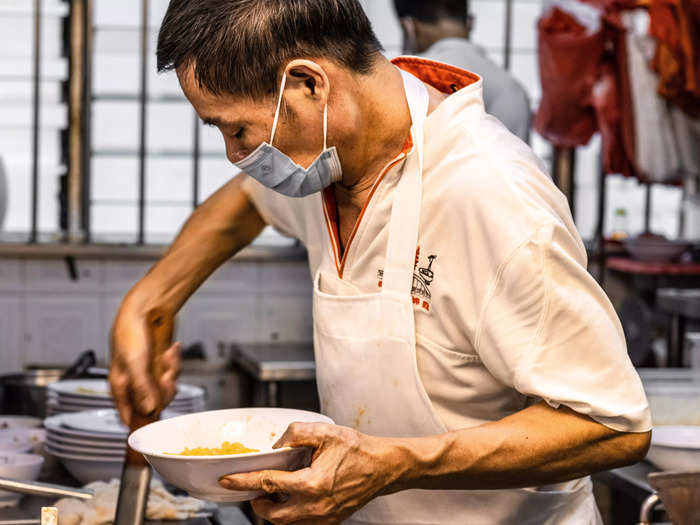
Founded by Tang Joon Teo in 1932, the stall popularized the bak chor mee commonly found in Singapore today — noodles with black vinegar, chili paste, and minced pork.
The stall is now run by his son Tang Chay Seng, who took over when his father died in 1995.
Head chef Chua Hock Cheng, who one patron described as Joon Teo's "disciple," has been working at the stall for four decades.
Like many hawker centers, Tai Hwa Eating House is located within a public housing area.

The hawker center can be found under a block of apartments in central Singapore, a five-minute walk from the nearest train station, Lavender.
Tai Hwa Eating House has fewer stalls than the average hawker center, with only three open when I visited — a drinks shop, a rojak or mixed salad shop, and Tai Hwa Pork Noodle.
When I visited at around 2 p.m., the weekend crowd was starting to pick up.
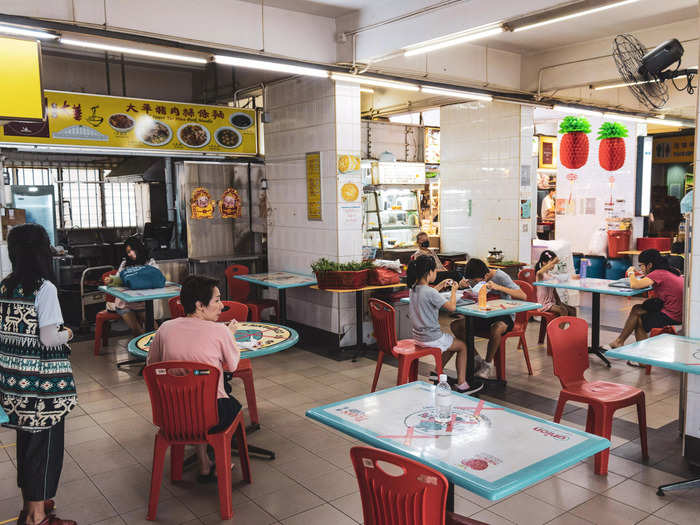
Most of the hawker center's patrons were either already eating or lining up for the Tai Hwa Pork Noodle.
As I queued up to order, I struck up a conversation with the woman in front me. Caoann Teoh told me that, like me, she was a first-time Tai Hwa customer with high expectations.
"My friends say that their bak chor me is authentic," Teoh said.
She added that her high expectations come from rave reviews on social media that claim the stall sells "the best noodles in Singapore."
Another patron, Teh, told me he began patronizing the stall before it shot to international fame in 2016.
"The Michelin star brought with it a price increase," said Teh. "The standard remained the same, so I still think it's worth the price," he added.
While there were only 10 people when I began to queue for the noodles, a dozen more joined soon after.

Unlike the many hawker stalls that operate almost every day for 24 hours, this stall is open from 9 a.m. to 6 p.m. from Tuesday to Sunday. Even so, many customers go out of their way to patronize the shop during business hours.
One longtime customer told me he had been eating their noodles for 40 years, "since he was young."
"I'm a big fan," said another diner, 55-year-old Anthony Lee. "Once you try it, you hesitate trying other bak chor mee. Everything is just right," he added.
Gourmet awards and photographs of owner Chay Seng and chef Cheng were tacked to the stall's wall.
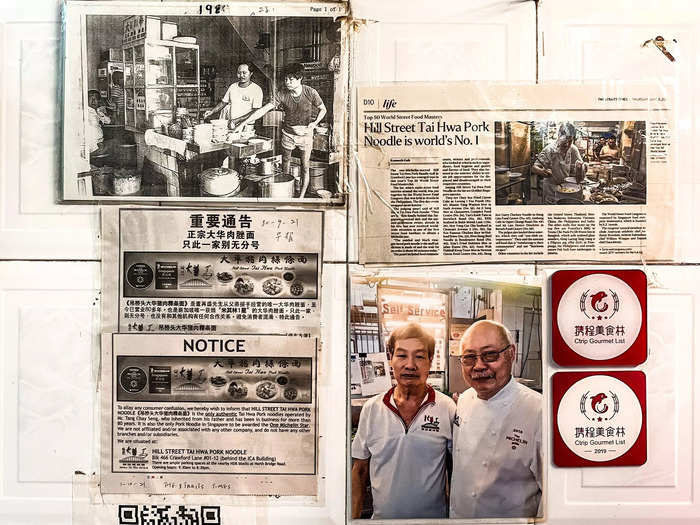
Also plastered on the stall's wall was an ad Tai Hwa took out in a local newspaper warning customers of a certain copycat vendor, which happened to be managed by the owner's nephew.
The family feud stemmed from the rivalry between the founder's sons. While Chay Seng "inherited" the stall, his brother Chai Chye set up another shop that Chay Seng denounced in the advertisement, reported local news outlet Mothership.
It was finally my turn, and I was more than ready to devour two bowls of noodles.
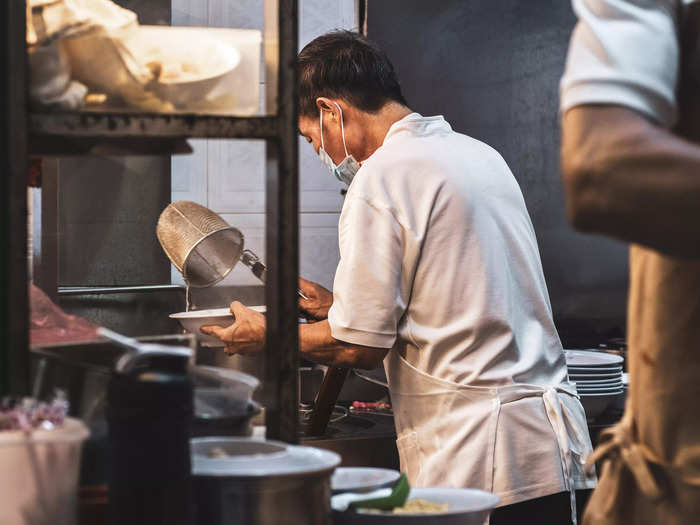
The stall offered three bowl sizes that cost S$6, S$8, and S$10 respectively. I ordered each of their only two noodle offerings — flat rice noodle soup (guo tiao tang) and hot dry minced meat noodles (gan mian).
It took about 15 minutes to get my order, thanks to chef Cheng's speedy technique of blanching the noodles before mixing them in a special sauce.
The atmosphere was relaxed enough that I was able to not only snap photos but also speak briefly to the chef and an assistant cook who helped weigh the noodles according to price, so you'll always get what you pay for.
I was especially excited for the dry noodles, which were made with sambal, a chili sauce with shrimp paste and garlic, and black vinegar.
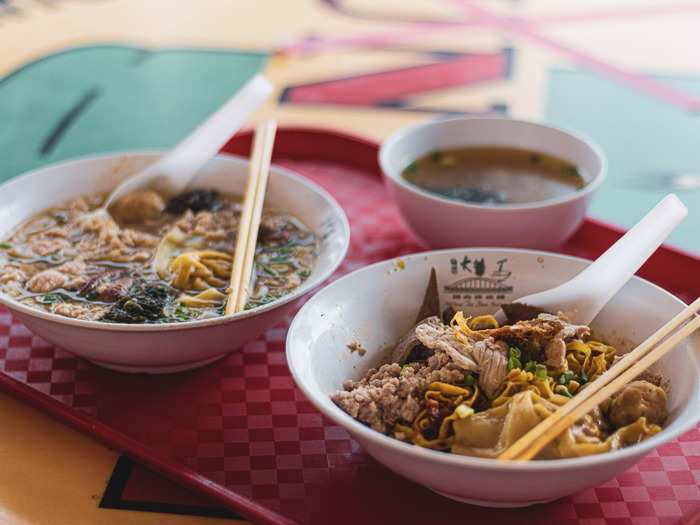
Tai Hwa Pork Noodle, with its one Michelin-star rating, is described by the Guide as "high quality cooking, worth a stop."
The Guide has five criteria: quality of the ingredients used, mastery of flavor and cooking techniques, the personality of the chef in his cuisine, value for money, and consistency between visits, according to its website.
My personal standard for a good bak chor mee is a lot simpler: savory, balanced, and fresh.
As someone who eats noodles nearly every day, both dishes hit the spot — but the dry bak chor mee was the one that exceeded expectations.

The dry noodles were fresh and silky, the meat flavorful, and the sauce had that yummy umami flavor.
Unlike other gan mian, this version was more mild in spice, but could easily be kicked up a notch with some fresh chilis. The soup that accompanied the noodles was rich yet refreshing — I usually don't enjoy the free soup because it can taste bland like boiled water, but this was an exception.
On the other hand, the rice noodle soup was light and balanced with very mild flavor. In fact, I found the two complimented each other.
It was a pleasant meal on a cool, rainy weekend afternoon, and like many others on that day, I took my time to enjoy my bowls of noodles and an iced tea.
Before I left, I caught up with chef Cheng, who was having lunch at around 4.30 p.m., right after the crowd dissipated.

When I asked him why his noodles had such a big following, he replied in Chinese: "I can remember customers for years and years, sometimes even 40 years."
"I'm happy when I hear that people love the food, and I feel the same about the Michelin star," he added.
If you ask me, one of the best parts of Singapore culture is the love of food, and more importantly, the love of delicious, affordable food.
And that day, I experienced the epitome of this culture, just by eating a bowl of Michelin-starred bak chor mee at a hawker center. It's more than just street food — it's part of everyday life in Singapore.
READ MORE ARTICLES ON
Popular Right Now
Popular Keywords
Advertisement